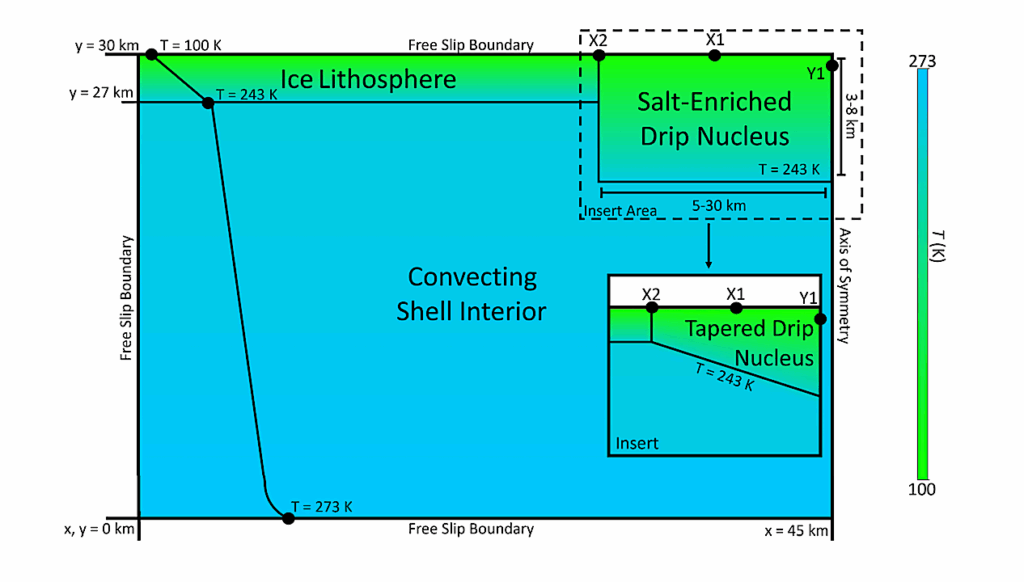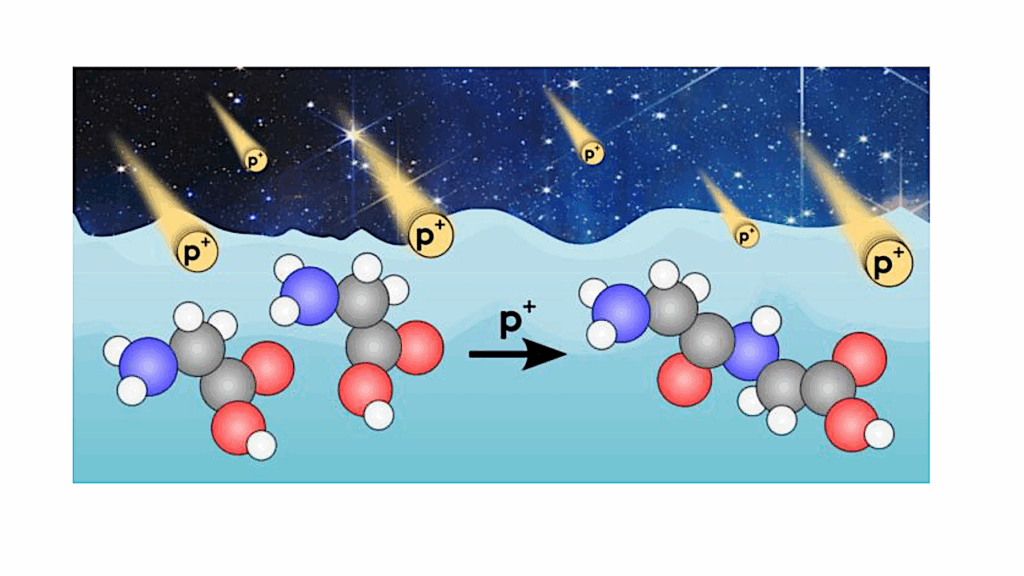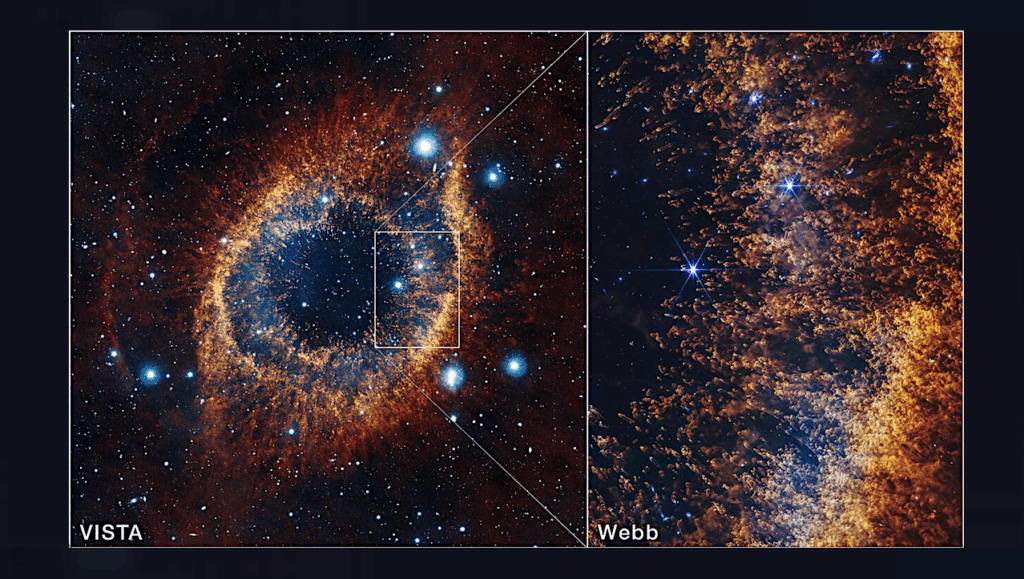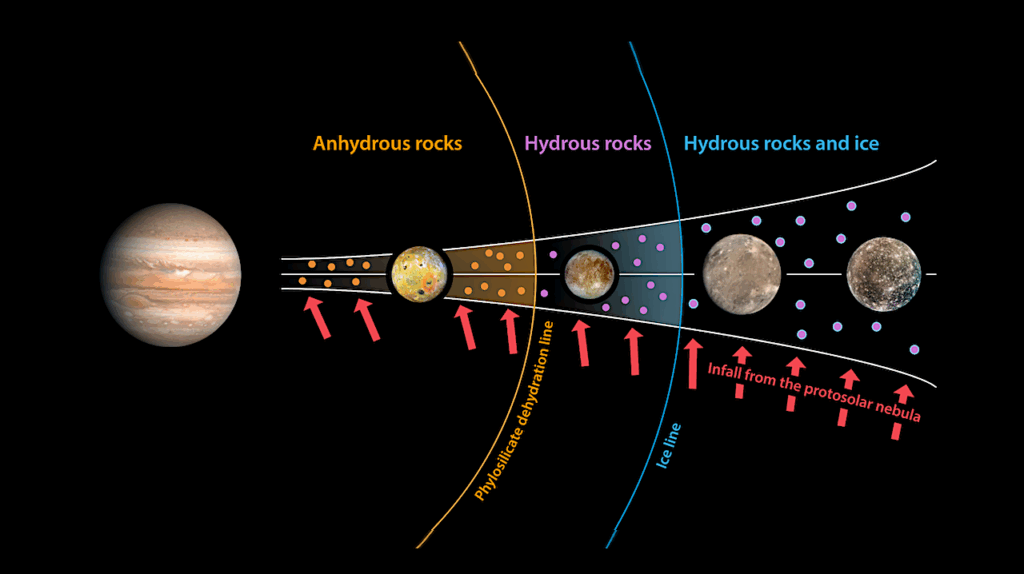The Complex Organic Molecular Content In The L1517B Starless Core
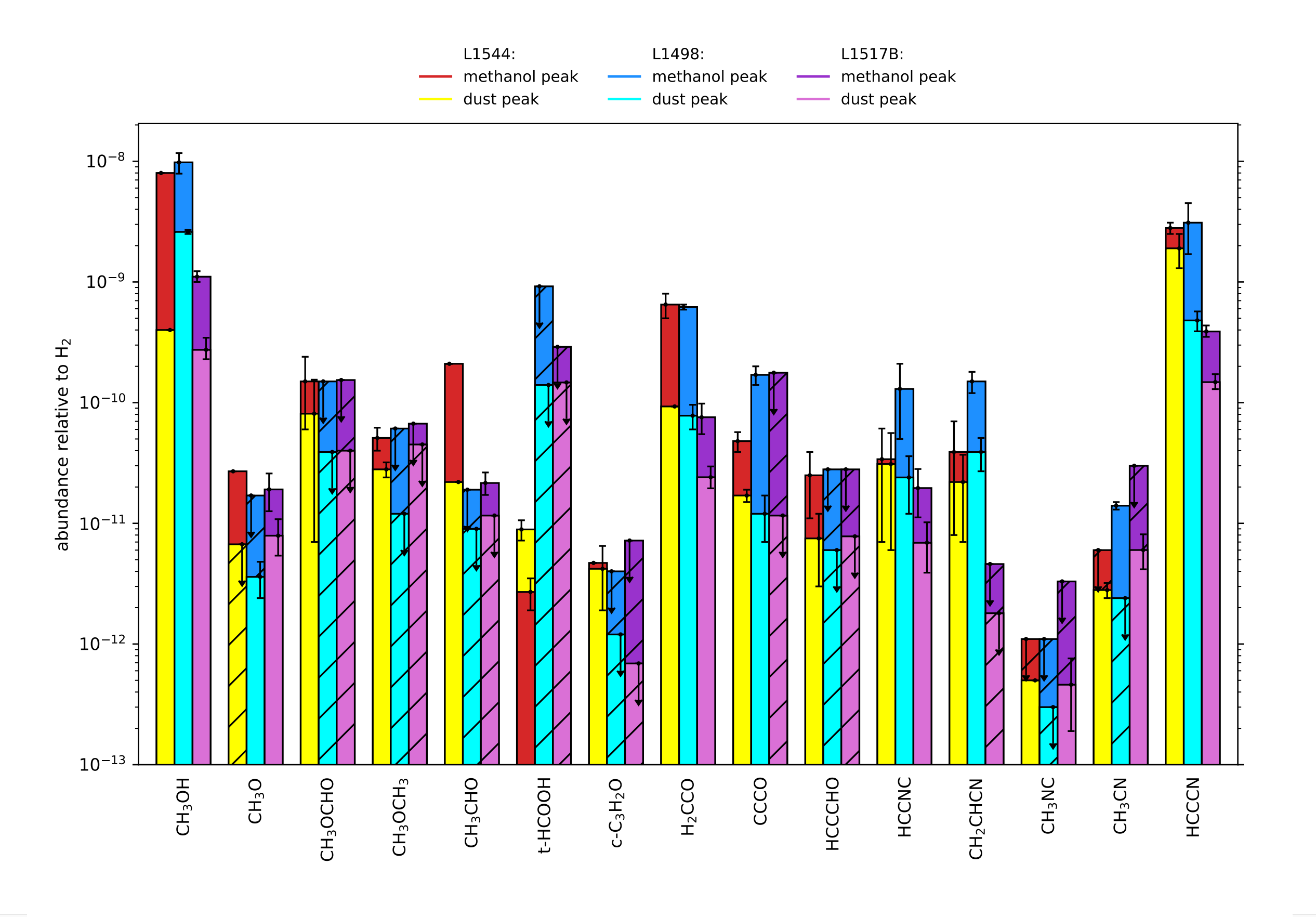
Recent observations of the pre-stellar core L1544 and the younger starless core L1498 have revealed that complex organic molecules (COMs) are enhanced in the gas phase toward their outer and intermediate-density shells.
Our goal is to determine the level of chemical complexity toward the starless core L1517B, which seems younger than L1498, and compare it with the other two previously studied cores to see if there is a chemical evolution within the cores.
We have carried out 3 mm high-sensitivity observations toward two positions in the L1517B starless core: the core’s centre and the position where the methanol emission peaks (at a distance of ∼5000 au from the core’s centre). Our observations reveal that a lower number of COMs and COM precursors are detected in L1517B with respect to L1498 and L1544, and also show lower abundances. Besides methanol, we only detected H2CCO, CH3CHO, CH3CN, CH3NC, HCCCN, and HCCNC.
Their measured abundances are ∼3 times larger toward the methanol peak than toward the core’s centre, mimicking the behaviour found toward the more evolved cores L1544 and L1498. We propose that the differences in the chemical complexity observed between the three studied starless cores are a consequence of their evolution, with L1517B being the less evolved one, followed by L1498 and L1544.
Chemical complexity in these cores seems to increase over time, with N-bearing molecules forming first and O-bearing COMs forming at a later stage as a result of the catastrophic depletion of CO.
Andrés Megías, Izaskun Jiménez-Serra, Jesús Martín-Pintado, Anton I. Vasyunin, Silvia Spezzano, Paola Caselli, Giuliana Cosentino, Serena Viti
Comments: Accepted, 18 pages, 13 figures
Subjects: Astrophysics of Galaxies (astro-ph.GA); Solar and Stellar Astrophysics (astro-ph.SR)
Cite as: arXiv:2211.16119 [astro-ph.GA] (or arXiv:2211.16119v1 [astro-ph.GA] for this version)
Journal reference: Monthly Notices of the Royal Astronomical Society, 2022
Submission history
From: Andrés Megías
[v1] Tue, 29 Nov 2022 11:46:18 UTC (579 KB)
https://arxiv.org/abs/2211.16119
Astrobiology, Astrochemistry




